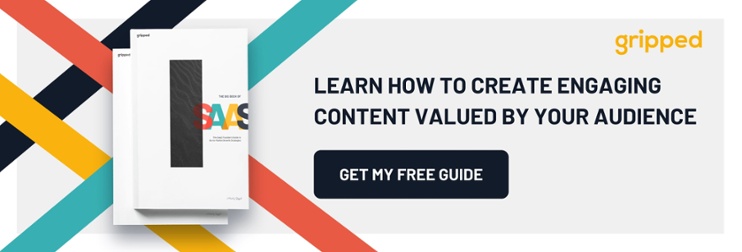We live in the age of the blog. We’ve all read one, you’re reading one right now. Most of us have subscribed to one. Some of us have even tried our hand at writing at least one. “Weblogs” have been around since the early days of the internet, but over timetheiruses as a business tool have evolved and diversified. Today, blogs are many things to many people. For some they are simply a stream of consciousness; an unrefined warmup for other, more serious, writing activities. Some blog as a way to keep in touch with friends and family all over the world. Some blog to bring practical help and advice to others. For entrepreneurs and businesses, however, the humble blog can also be a powerful marketing tool. If you currently blog regularly but your content doesn’t drive high value, intent-rich leads…Your blog needs to work harder for you!
In this article we’ll look to layout how you can put your blog to work. How to structure an article and the SEO factors hygiene factors you should take into account to make sure that your blog ranks on search. The ultimate aim being generating leads that are ready for your sales team. So let get into it.
How blogs play a role in B2B lead generation
A business’ blog should be the backbone of your content marketing strategy. It’s an outlet that allows you to lend a voice to your brand. A voice that’s authoritative and trustworthy yet also entertaining, accessible and may even dare to be witty. A voice that builds trust and value in your brand while also giving existing customers and new prospects alike that all-important something for nothing. They can also provide opportunities for thought leadership to raise the profile and prestige of your Founder, CEO or others, establishing them as someone with thoughts, experiences and insights well worth listening to.
Of course, it’s one thing to understand the value that blogging can bring to your business and another thing altogether to know how to use it as a potent B2B lead generation tool. Here we’ll dive deep into some fundamentals of blog content creation so that your business can benefit from an engaging, relevant and strategically driven business blog…
Section 2:
Why structure is important for blog article creation
Many a would-be business blogger has found themselves frustrated by their blog posts. Either they look at their analytics and find that their posts have a depressingly high bounce rate or they spend what feels like hours in their offices staring at a blank screen. These are two very different symptoms of the same problem…
Your blog articles lack structure
Structure is extremely important for both writers and readers. Without structure blog articles can become meandering, dense and often tautological. Navigating through such blog articles can be like making your way through dense forestry equipped only with a butter knife.
As tempting as it can be to write a “stream of consciousness” when you blog, it’s helpful to plan an article’s structure before putting metaphorical pen to equally metaphorical paper. Structuring your blog post is important for a number of reasons;
It gives you direction
Let’s face it, nobody wants to waste their time grimacing in frustration at a blank screen. Planning a post’s structure before adding meat to the bare bones helps you to focus your thoughts and avoid writer’s block. It also stops your prose from meandering and keeps it concise and to the point so that your message is not lost in a dense thicket of words.
It’s easy to digest
You don’t just want your content to be read, you want it to be comprehended. You want readers to walk away having learned something and having your brand to thank for it.
If your content is too dense there’s more of a chance that they won’t even attempt to engage with it. The convenience of the internet has made readers capricious. If your blog doesn’t give them what they perceive to be value straight away, they will abandon it. What’s more, well structured content is easier to digest on a mobile device… And chances are that that’s how most readers will consume your content.
Subscribe to Growth Essentials
Join the 1,000s of B2B Founders, Sales and Marketing professionals who get the most valuable Gripped insights about growth, sales, marketing and product directly to their inbox.
It leads to quality engagement
Well structured content tells a story. A story broken down into little narrative “acts”. We’re preconditioned to love stories. We’ve been raised to look for both entertainment and deeper meaning in our stories. Thus, your content should be structured like a book, film or play. It should have a clear narrative flow yet be broken down into easily digestible chunks.
This will help you to attract an audience who will engage with your content in meaningful ways; not just consuming it but commenting and sharing. This is the kind of engagement that leads to quality interactions with your brand and aids reader conversion. Which brings us very neatly to…
Section 3:
How to create a blog post that drives traffic and converts
Before you sit down to compose an article, you first need to determine what it is that you’ll be writing about. This is the first step towards creating engaging content. With content, as with most things, it’s tempting to approach your posts from a “me first” perspective rather than a “customer first” perspective. While it’s understandable that many will come to their keyboards thinking “What do I want to write about?” or “What do I know a lot about?”, it’s more pertinent to…
Ask yourself, “How will this post add value for the reader?”
This may be a bitter pill to swallow but…Readers don’t care about you or your company.
Remember that you’re aiming to attract strangers with no knowledge of you or your business. That doesn’t mean that they won’t some day become enthusiastic brand advocates, but if you’re to build value and trust in your brand you need to give readers more of what they want.
Writing about things you’re passionate about is fun and rewarding, but your content needs to be approached from the customers (or more accurately the target personas) perspective. Put yourself in the position of your buyer personas. What interests them? What do they want to know more about or better understand? What kind of content is likely to resonate with them? What problems will they be looking for solutions to that you can provide?
Content that brings value to the reader has a much better chance of driving meaningful engagement.
Make choices informed by keyword research
Keywords are the words and phrases that your prospective customers type into search engines. They are the means by which they will (hopefully) find and engage with your content. While you can tailor your content to be more appealing to search engine algorithms (SEO) which we’ll discuss later, creating content based on keyword research is a great start, especially if you’re floundering in terms of knowing what to write about.
- Which keywords are your buyer personas using?
- Which of these are directly associated with your business and your industry?
It’s important not to try and cram as many keywords as you can into your content. This is known as keyword stuffing and can actually be detrimental to your search engine rankings (not to mention feeling forced and tedious for readers).
Instead of packing your content with keywords, aim for one long-tail keyword per blog post. A long-tail keyword is a targeted search phrase containing three or more words. These add more focus than high competition keywords which could damage reader’s chances of engaging with your content.
For example, let’s say that you’re a SaaS business providing accounting software for dental practices. Account Software is an extremely high competition keyword that will put you in direct competition with bigger and more established brands. A longer tail keyword, however, like “Account Software for Dental Practices” narrows down the parameters and makes it easier for your target niche to find your content.
Thus; “5 Benefits of Accounting Software for Dental Practices” or “The 10 Best Account Software Providers for Dental Practices” would be great titles that capitalise on the use of a long-tail keyword. Speaking of titles…
Engagement starts with the title
Needless to say, your content’s title should catch your reader’s attention while also lending structure to your content. Think of your title as a promise on which your content needs to deliver. Using long-tail keywords can not only help you to choose a title that drives engagement, it can also lend specificity to the content.
Yet, while a title can serve as the focal point for the content, it doesn’t need to be set in stone. When your content is written, try and spend a few minutes thinking of alternative titles. Are there any that could make your content more appealing, nay unmissable for your target audience?
Here are some pertinent questions to ask yourself when choosing a title;
- Does it align with the focus of the content?
- Is it too long? The perfect blog post title length is 60 characters, while titles of 8-12 words in length are most shared on Twitter. And titles between 12 and 14 words are liked most often on Facebook.
- Does it set the right expectations for the reader? If a post isn’t consistent with a reader’s expectations or buries the lede you can expect bounce rates to soar.
- Does the content answer the question posed in the title?
Incidentally we’ve written more on how to form a blog title in our blog article: How to Write Engaging Headlines and Blog Titles.
Creating and structuring your blog post
Now that you have a clear idea what you want to write about that’s informed by keyword research it’s time to set about creating and structuring the post itself. What format will it use? Will be be a “how to” guide? A list? Or a more generic blog article?
For lists the structure pretty much takes care of itself. A snappy and succinct into of around 250-275 words followed by list entries of 125-150 words is a good rule of thumb that will lend a nice flow to your content and prevent users from getting bored and bouncing away.
Even posts that don’t use this format can benefit from a similar structure. Organise what you want to say into a series of discrete sub-headers that use H2 tags. Beneath these will be paragraphs which are self-contained yet all contribute to the narrative flow of the post.

It’s essential that your introductory paragraph by succinct and captivating. Making it overly long will obfusticate the purpose of the article and alienate the reader. Likewise, your intro should indicate to the reader how the content below will help them to learn something new or solve a common problem that they may face.
Tone is also an important consideration. How will your blog post help your band to find its voice? Will it be humorous and witty? Authoritative and punchy? Understanding and empathetic? A combination of all three? There are no right or wrong answers here, but a consistent tone is really important.
When it comes to post length… This really depends on the nature and content of the post. You should be able to say everything you need to say while still creating a post that flows at a pace. Analysis by Hubspot reveals that the perfect article length is 2,100 words although your mileage may vary. But we’ve written more about that here in our article: How Long Should Blog Posts Be? Why Length Matters.

Section 4:
How to optimise your blog article
Now that we have our content, our next step is to optimise it both for readers and for search engine algorithms. E.g. WordPress users will find a plugin called Yoast extremely effective. It will help you to identify and work on “bad habits” in your writing that can be harmful to your Search Engine Optimisation (SEO) while also helping you to make tweaks to your blog post metadata. Speaking of metadata, post optimisation starts with;
The URL
Your URL needn’t exactly match your post’s title. In fact, it’s a good practice to shorten the URL without obfuscating the meaning of the post. It’s also good practice not to include numbers which could be outdated or anything else in the URL which might need to be updated later. Updating a URL results in a 301 redirect; a permanent redirection from one URL to another… And this can be harmful to your SEO.
Meta description
Your meta description is a short introduction (around 150-160 characters) which tells readers and search engines alike what your post is about while subtly convincing readers to click through to the article.
Image alt-text
Search engines can’t see images like human beings can. Thus, they have no way of knowing what an image is “about”. Alt-text gives them the data they need to rank your images in search engine results. This can be surprisingly effective in drawing search engine users to your content.
Strategic link placement
Internal and external links are great for SEO as well as establishing trust and authority in your brand. Linking to external sources when you make a claim or cite a statistic shows you’ve done your homework. Just be sure to create links that open a new window so that users aren’t directed away from your content.
Likewise, use whatever opportunities you can to use links to encourage users to move around through your website. Suggesting related articles that may be of value to them helps your SEO while making your blog a more useful resource for readers.
Keyword density
There is no golden ratio when it comes to keyword density but be wary of keyword stuffing. If you think that you are overusing a certain keyword think of fitting synonyms or alternative phrasings which will avoid keyword stuffing without disrupting your narrative flow.
Calls to action
Ideally, your post should inspire users to take a certain action. This is known as a Call To Action or CTA. This can be something along the lines of “Click here to learn more” or “Looking for more content like this? Click here to subscribe to our newsletter”. CTAs are a crucial part of transforming readers into leads with a vested interest in your brand.

Section 5:
Tips for writing effective blog posts that people want to read
Okay so we got to nearly the end of the blog before we said ‘Content is King’. But all too often we see those who blog for business become crippled with paranoia every time they post an article that they’re not “SEOing enough”.
In an age where SEO has become such a huge part of the conversation when it comes to B2B lead generation, it’s easy to let your creativity become stymied by SEO considerations. However, it’s important to remember that first and foremost you’re writing for human readers, not for search engine crawlers. Sure, it’s important to consider SEO as you write and to use plugins like Yoast to condition yourself to write in more SEO friendly ways. Nonetheless, your first priority should always be to write engaging content that people want to read.
When you write interesting, engaging and witty content that is of value to readers, you might just find that SEO takes care of itself, anyway. You’ll keep users coming back, you’ll keep them on the page for longer, you’ll get them to scroll more deeply and you’ll get them to navigate through your website looking for more content gold… And those behaviours will all help you to organically curry favour with capricious search engine crawlers. In writing engaging blog posts that resonate with readers, it’s important to bear these tips in mind;
Use simple language
You’re educated, intelligent and articulate… But lots of big words and technical jargon can be difficult to read. Try and keep your use of language simple and conversational in tone. You can still address weighty issues in language that is engaging and appealing to readers.
Avoid passive voice
If content is written by you in passive voice (see what we did there), it becomes flat and boring. Active voice, on the other hand, is more succinct and authoritative.
Use short sentences and paragraphs
Shorter and more readable sentences and paragraphs tend to attract more readers and keep them on page for longer. Aim for a Flesch Kincaid reading score of 50-55. This should allow you to engage in complex issues without using needlessly dense and complex language.
Address the reader
Addressing the reader directly can help them to engage with the content. Using terms like “you” and “your” is a simple but effective way of reminding readers that your content is for them.
Shave away the fluff
Words like “very”, “actually,” “just”, “really” and “extremely” may help to boost your word count but they add no value to the reader and can make your sentences unwieldy. Look for opportunities to shave away these “fluff” words.
Section 6:
In conclusion…
Your blog can be an extremely powerful tool that generates a steady stream of intent-rich leads. But it can also be a colossal waste of your time and resources. Stick to the advice above and you’ll leverage your blog for maximum reader engagement. This will build value in your brand and establish you as a trusted authority and a go-to resource within your industry.
We’re keen to hear more of your thoughts and tips and whether you feel your business is using blogging to drive leads for your sales team.
Comment below and share you experience.


